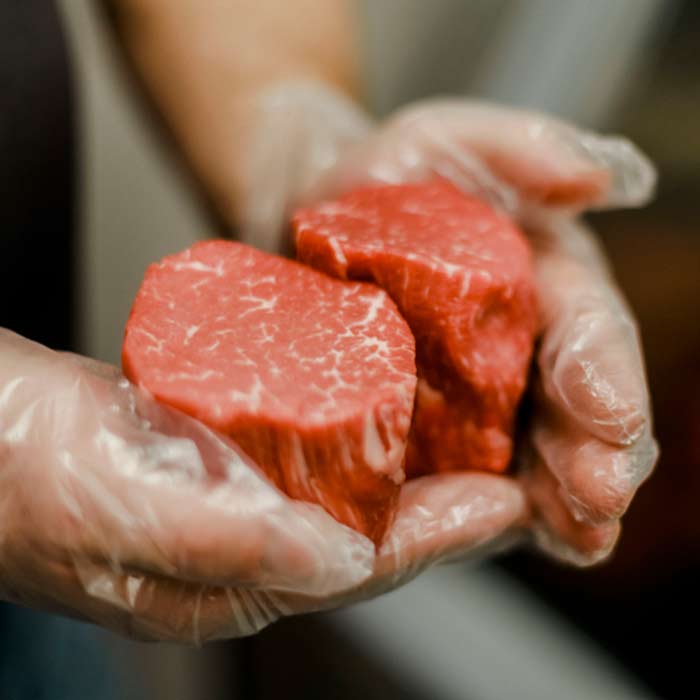What Makes Bagley Farms Meat Market Edwardsville IL Stick Out for Meat Lovers
What Makes Bagley Farms Meat Market Edwardsville IL Stick Out for Meat Lovers
Blog Article
Uncover the Art of the Butcher's Cut in a Modern Meat Market
In the ever-evolving landscape of modern meat markets, the butcher's cut has transcended its typical roots, combining age-old workmanship with contemporary techniques. Today's butchers are not just processors of meat; they are knowledgeable craftsmens that stress sustainability and moral sourcing. Their know-how in choose and preparing cuts customized to certain cooking needs provides an unparalleled eating experience. What absolutely establishes the modern butcher apart is their capacity to create a much deeper connection in between consumers and the origins of their meat. Just how do these masters balance practice with technology, and what ramifications does this have for the future of meat consumption?
Evolution of Butchery Methods
The evolution of butchery methods reflects a rich tapestry of technology and adaptation driven by improvements in technology, adjustments in consumer demand, and a much deeper understanding of meat science. Historically, butchery was a craft gave with generations, with methods sharpened over centuries to take full advantage of return and flavor. Nevertheless, the commercial revolution ushered in mechanization, changing conventional methods and making it possible for large-scale processing.
The mid-20th century saw butchery methods better refined by scientific insights into muscle mass biology and meat aging, boosting both inflammation and preference. Developments like vacuum packaging and refrigeration extended product shelf-life, enabling butchers to expand offerings and boost quality assurance. This period also marked the rise of specialized tools, such as band saws and meat slicers, which boosted accuracy and effectiveness in meat processing.

The 21st century has presented electronic modern technology into the butchery world. Digital systems now help in tracking animal provenance and optimizing cuts to meet specific customer choices. In addition, a rebirth in artisanal butchery has actually emerged, mixing standard skills with modern-day understanding to provide to customers looking for moral and sustainable meat choices. This development underscores a vibrant interaction between tradition and advancement, meeting contemporary needs while protecting the craft's heritage.
Understanding Meat Cuts
Understanding the ins and outs of meat cuts is crucial for both butchers and consumers seeking top quality and value. For butchers, accurate cuts reflect ability and regard for the craft, guaranteeing marginal waste and optimum yield.

Understanding muscular tissue make-up is important; muscles used extra frequently by the animal have a tendency to be tougher and are best matched for slow food preparation approaches, while less-used muscle mass, like those located in the loin, are extra tender and ideal for barbecuing or roasting. Experience with these differences equips customers to make informed choices, enhancing their cooking ventures.
Choosing Top Quality Meat
Choosing the ideal meat entails greater than just choosing an aesthetically appealing piece from the screen. bagley farms meat market edwardsville il. The art of choosing top quality meat calls for a critical eye and expertise of particular features that symbolize freshness and quality. Pay interest to the color; beef ought to have a brilliant, cherry-red hue, while lamb should display a soft pink tone, and pork additional resources a light pink. This suggests the meat is fresh and hasn't been revealed to oxygen for also long.
Second of all, consider the marbling, which refers to the white streaks of fat within the muscle mass. Correct marbling is a crucial sign of tenderness and flavor, as it melts during cooking, boosting the meat's juiciness. Keep in mind, higher marbling usually associates with premium high quality cuts, such as USDA Prime.
Texture is an additional important variable; meat needs to feel firm to the touch, not slimed or excessively soft. In addition, bear in mind the aroma. Fresh meat needs to have a tidy, neutral odor, free from any kind of sour or repulsive smells.
Coupling Cuts With Cooking Techniques

On the other hand, harder cuts like brisket and chuck roast are rich in collagen, which damages down right into gelatin when prepared slowly. These cuts are perfect for braising or slow-moving roasting, allowing the meat to tenderize over time and create deep, intricate tastes. In a similar way, cuts such as short ribs and pork shoulder get on well with slow-cooking approaches, where prolonged cooking times transform their durable appearances right into succulent dishes.
Lamb view shanks and oxtail, which need long term cooking to tenderize, are ideal candidates for cooking or slow simmering. These methods coax out rich, hearty flavors while maintaining moisture. By comprehending the special features of each cut, cooks and home chefs alike can raise their culinary developments, making certain each recipe is both pleasing and unforgettable.
The Butcher's Function Today
Browsing the developing landscape of the modern-day meat market, the butcher's role today expands beyond simple preparation of cuts. Contemporary butchers are culinary see this here craftsmens, educators, and supporters for sustainable methods.
In enhancement to crafting accurate cuts, butchers currently engage directly with consumers, providing cooking suggestions and tailoring choices to match private needs and choices. Their knowledge in meat aging, marbling, and taste accounts equips customers to make informed decisions, improving their cooking experiences. This personalized service exhibits the butcher's evolving role as a trusted expert in the kitchen.
Furthermore, butchers are essential in decreasing waste, utilizing entire pets to create diverse products such as sausages and supplies. This thorough approach not only appreciates the animal yet additionally aligns with contemporary sustainability goals. In this method, the modern-day butcher personifies both tradition and development, adjusting to an ever-changing market while maintaining the virtuosity and integrity of their craft.
Conclusion
Proficiency in comprehending diverse meat cuts and quality indications equips butchers to offer informed referrals, straightening particular cuts with optimal food preparation approaches. By honoring historical techniques while accepting contemporary needs, the butcher's function remains essential in today's innovative meat market.
Report this page